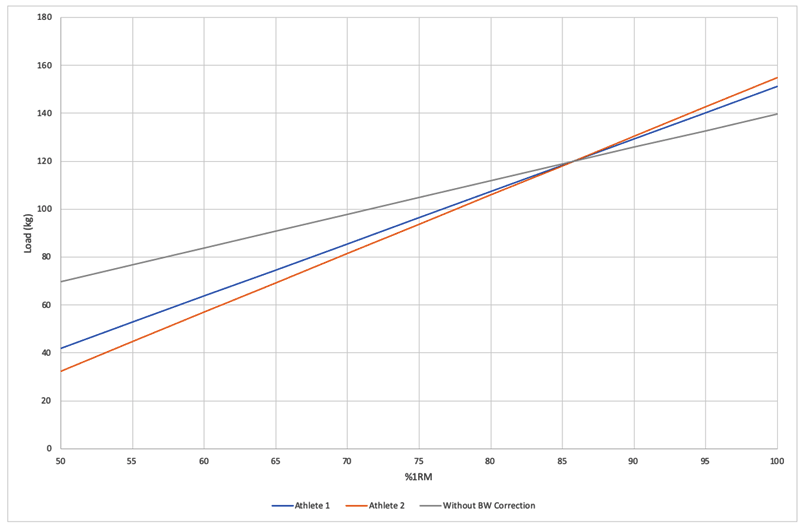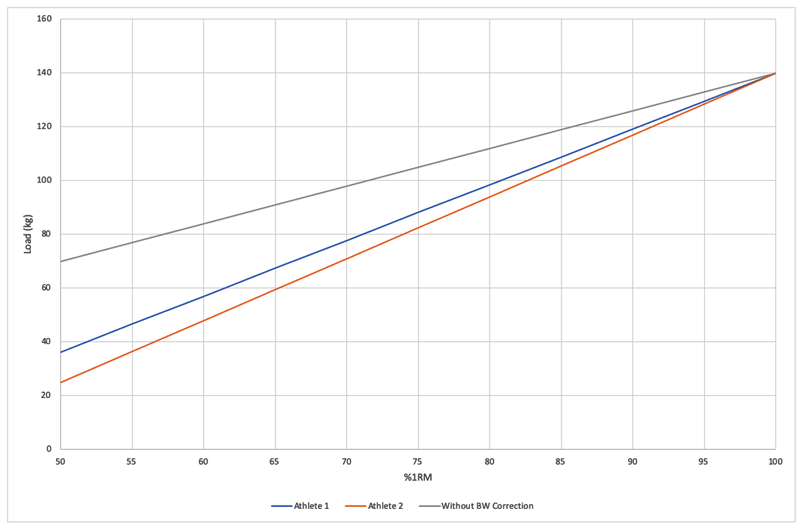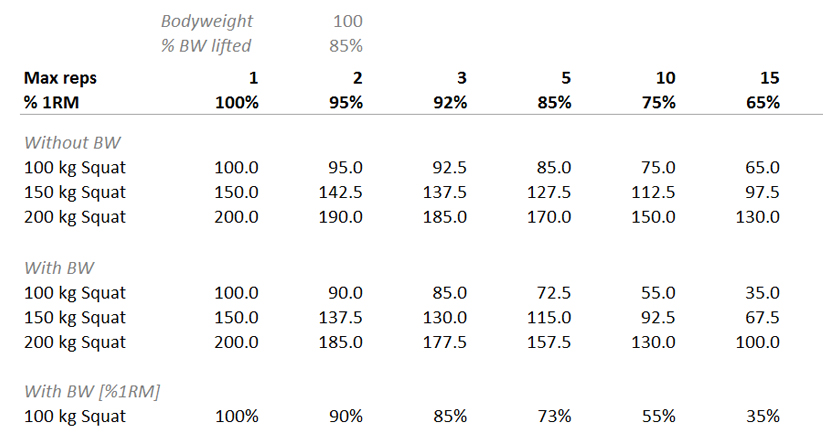Strength Training Manual: Prescription – Part 2
1. Introduction
2. Agile Periodization and Philosophy of Training
3. Exercises – Part 1 | Part 2
4. Prescription – Part 1 | Part 2 | Part 3
5. Planning – Part 1 | Part 2 | Part 3 | Part 4 | Part 5 | Part 6
I am very happy to announce that I am finishing the Strength Training Manual. I decided to publish chapters here on Complementary Training as blog posts for two reasons. First, I want to give members early access to the material. And second, this way I can gain feedback and correct it if needed before publishing it.
I look forward to hearing your thoughts.
Enjoy reading!
In the first part I have explained the three components of intensity, load-exertion table, what is 1RM, how to estimate it and how to use it to prescribe while in this part I will cover total system load vs. external load, how to compare individuals, percent-based approach to prescribing training loads as well as other prescription methods.
Total System Load vs. External Load?
Imagine we have two athletes with bodyweight of 75kg and 100kg and they both perform 5 pull-ups with extra 20kg attached using dip belt. What is their 1RM?

Table 4.7. Using external load to estimate 1RM. This is wrong for movements when one also lifts bodyweight
If we use only external load (in this case 20kg) and we use Epley’s formula, both athletes will have 23kg 1RM in the pull-ups (see Table 4.7). You might ask: “Yeah, but they are lifting their own bodyweight”. And you would be correct. For this reason we need to utilize ‘total system load’, which is in this case bodyweight plus external load (see Table 4.8)

Table 4.8. Using total system load to estimate 1RM.
As can be seen from the Table 4.8, Athlete 2 have much higher 1RM since he is heavier.
Now that we have 1RMs, how do we calculate the weights that needs to be lifted using percent-based approach? For example, if program calls for doing 3×5 with 75% 1RM?

Table 4.9. Percent-based approach to load calculation using total system load
But multiplying 75% with 1RM, we got 83kg for Athlete 1 and 105kg for Athlete 2 (see Table 4.9). That is also total system load that needs to be lifted for 8 reps. To get external load, we need to deduct bodyweight (see Table 4.10).

Table 4.10. To calculate external load using percent-based approach, bodyweight needs to be deducted from estimate total system load
To perform 3×5 pull-ups with 75% 1RM, Athlete 1 needs to add extra 8kg and Athlete 2 needs to add extra 5 kg.
If you use even lower percentages, there would be a point where you would need to deduct the load, either using elastic bands, or using special equipment (or moving to pull-down machine).
To estimate 1RMs for the assistance movements, for example DB Rows, one would use body weight corrected (total system load) 1RM in the pull-ups and check the conversion tables in the previous chapter. Since 1RM for single arm DB Row is 35% of 1RM of the pull-ups, for Athlete 1 that would be 35% x 111kg, or around 38kg.
The above example using pull-ups is quite intuitive, but now let’s compare bench press and back squat. Using basic wooden dowel (assuming 0kg external load), would you be able to do more reps on the bench press or on the back squat? You will be able to do many more reps on the bench press with wooden dowel than you would be able to do in the back squat. Why is that? Because, when you do squats, you are also lifting your bodyweight. The same relationship should hold true if we compare, say maximum number of reps with 50% of 1RM between back squat and bench press. You are more likely to do more reps on the bench press.
According to biomechanics research, the load you are lifting in the squat, besides external load, is approximately 90% of your bodyweight. This is pretty much your body without the lower legs (which are around 10% of your bodyweight).
Should we then take into account 90% of bodyweight when we calculate 1RMs and estimate loads for lower body lifts? Let’s use the same two athletes and compare 1RMs with and without BW correction (in this case 90% of BW). Both athletes lifted 120kg for 5 reps in the back squat:

Table 4.11. Estimating 1RM from reps to failure using only external load (Squat 1RM), total system load (Squat 1RM Total System) and external 1RM (Squat 1RM External)
The usual approach is to estimate 1RM using barbell load, which is 120kg. If we plug this into Epley’s equation, we get 140kg as 1RM. If we utilize total system load into account, taking Athlete 1 as an example, total system load would be 120kg + 90% of 75kg, which is 120 + 67.5, or 187.5kg. Using Epley’s equation to estimate 1RM, we get (187.5 x 5 x 0.0333) + 187.5, which equals 219kg (see Table 4.11). Using total system 1RM, we need to deduct 90% of BW to estimate external load, which is 219 – 90% BW, or 219 – 68, or 151kg.
On this simple example, it is easy to see how these models represent Small Worlds (see Chapter 1). Also, Epley’s formula is estimated using only external barbell load, not total system load. Thus, it is tricky to use the same formula across different scenarios. But let’s continue with the current example and see where it will take us (and keep in mind that one cannot use same equation across different conditions).
Let’s assume that we prescribe 3 sets of 5 reps with 75%. Let’s compare two methods of estimating the load:

Table 4.12. Calculating barbell weight using external 1RM and total system 1RM.
As can be seen in Table 4.12, load estimated using 1RM without BW correction is the same for both athletes (105kg), but different when we use BW corrected 1RM (97kg for Athlete 1 and 94kg for Athlete 2). Hopefully, this example showcase the pluralism of models and lack of single “objective” truth.
Let’s estimate how these estimates differ across continuum of loads (from 100% to 50% of 1RM).

Table 4.13. Different barbell load estimates across 50-100 %1RM using external load 1RM and total system load 1RM
Things look much clearer when plotted (see Figure 4.5):

Figure 4.5. Plot of estimated barbell loads across 50-100 %1RM using external load 1RM and total system load 1RM. This plot represent graphical representation of the Table 4.13
As can be seen on Table 4.13 and Figure 4.5, there are discrepancies between load estimation using bodyweight correction (total system load) and load estimation without bodyweight correction (using only external load), given Epley’s equation as a model in both scenarios. It can be seen that as percentages decrease, total system load approach estimates lowered barbell loads, especially for the heavier athlete. From the Figure 4.5, it can also be seen that 1RM estimated with reps-to-failure using total system load is higher than 1RM estimated using external load. That is most likely due the fact that original Epley formula doesn’t take into account bodyweight, but only external load.
Let’s assume that the true 1RM test is being done, thus we know with certainty what is the external 1RM (since athletes lifted it as 1RM). In that case, we can just add 90% of bodyweight to external load 1RM (140kg for both athletes) to get the total system 1RM (see Table 4.14):

Table 4.14. Different barbell load estimates across 50-100 %1RM using external load 1RM and total system load 1RM. This time, as opposed to reps-to-failure done in Table 4.13, true 1RM is being done. This way we know for sure what is external 1RM, since we tested it.
And now when the numbers get plotted, we get the following graph (see Figure 4.6):

Figure 4.6. Plot of estimated barbell loads across 50-100 %1RM using external load 1RM and total system load 1RM when known external 1RM is known due true 1RM test. This plot represent graphical representation of the Table 4.14.
It is logical to conclude that two athletes with the same 1RM (in this case 140kg), but with different body weights should be using different loads in training. This should hold true both with pull-ups and with squats. But things are not that straight forward and it is very easy to slip into the rabbit hole (if this doesn’t remind you of the Figure 1.1, I am not sure what does). When it comes to back squat example, I am not sure there is any research on reliability of Epley’s formula (or any other estimate of 1RM using reps-to-failure) when one uses total system load as opposed to using external load only. So in this case our 1RM estimation can be unreliable to begin with (especially if we haven’t performed true 1RM test as seen in the two examples above), as well as number of reps performed at certain percentage of it. Second, the load estimation for assistance exercises becomes cumbersome using total system load method. For example, according to conversion tables from previous chapter, 1RM of Romanian Deadlift (RDL) is approximately 75% of the back squat 1RM. This is straightforward when we use external load method, but when using total system load the calculus become much more complex, since we are not lifting 90% of body weight in the RDL. So we are back to “precision vs importance” dichotomy (Figure 1.1). My approach is to utilize the simplest approach possible that gives me enough of actionable insights that I can start using right away and be able to update as I go. And I will be wrong – I just want to make sure that I am conservative and having Type I errors (undershooting). Besides, we are always dealing with ‘estimates’ and hence there is a lot of uncertainty involved already. And making things more complex on top of uncertain metrics is not my cup of tea (although it is a good exercise in futility).
But before I wrap up total system vs external load approaches, let’s take one more example. If we know athlete’s 1RM in the bench press, we might want to estimate how much external load that athlete needs to use in the push-up movement (for example putting weight vest, plate on the back or using dip belt when elevated). If you put your arms on the scale in the push-up position you can estimate that around 70% of your weight is supported on your arms (this of course depends on the body type, but 70% will be ‘good enough’ estimate). Taking our two athletes as an example, both with 120kg 1RM in the bench press, we want to estimate external load for the push-up when we prescribe sets of 5 with 75% 1RM (Table 4.15).

Table 4.15. Estimation of push-up load, assuming 70% of BW is supported and total system load is equal to bench press 1RM
As can be seen from the Table 4.15, knowing athletes’ bench press 1RM and assuming 70% of bodyweight is supported in the push-up, calculated external load for sets of 5 reps with 75% 1RM are 15kg for Athlete 1 and -2.5kg for Athlete 2 (which means he need to ‘deduct’ some weight, or do less reps). The reverse process can also be utilized – we can estimate bench press 1RM from push-up reps-to-failure performance (Table 4.16):

Table 4.16. Estimating bench press 1RM using externally loaded push-ups for reps
Let’s wrap up the issue of total system load vs. external load approaches. First of all, we are dealing with estimates that are inherently uncertain (except when performing true 1RM test, but even with that we are uncertain about assistance exercise 1RMs) – type of movement, experience, gender, motivation, body built and others all affect reps-to-failure method reliability of estimating 1RM, and especially estimating assistance movements 1RMs and later training prescription loads (e.g. what %1RM we should use for 3 sets of 10 for upper vs. lower body movement). The question is why? Why do we need 1RMs for? In my opinion, besides being an evaluation of performance, we need it to prescribe loads. And for that we need to lean more toward ‘significance’ in the ‘precision-significance’ continuum (Figure 1.1), and to utilize ‘satisficing’ philosophy. In other words, we need ‘something’ to work from without killing the athletes. So, it is a form of heuristic that we use to prescribe training.
It seems logical that total system load approach can be used with say pull-up movements and push-up movements (essentially bodyweight), in which external load is not close to bodyweight. With lower body movements, such as squats and deadlifts, using external load approach will suffice. It might not be the most precise, but it is good enough to prescribe training. There will always be individual differences, exercise differences, estimation formula differences, but it is up to us to deal with all these uncertainties using simple rules, but also realizing and understanding all the assumptions involved. Plan, Do, Check, Adjust (see Figure 2.13).
Some coaches, such as great Dan Baker, utilize very simple heuristic when doing higher reps training for upper vs. lower body movements:











Responses